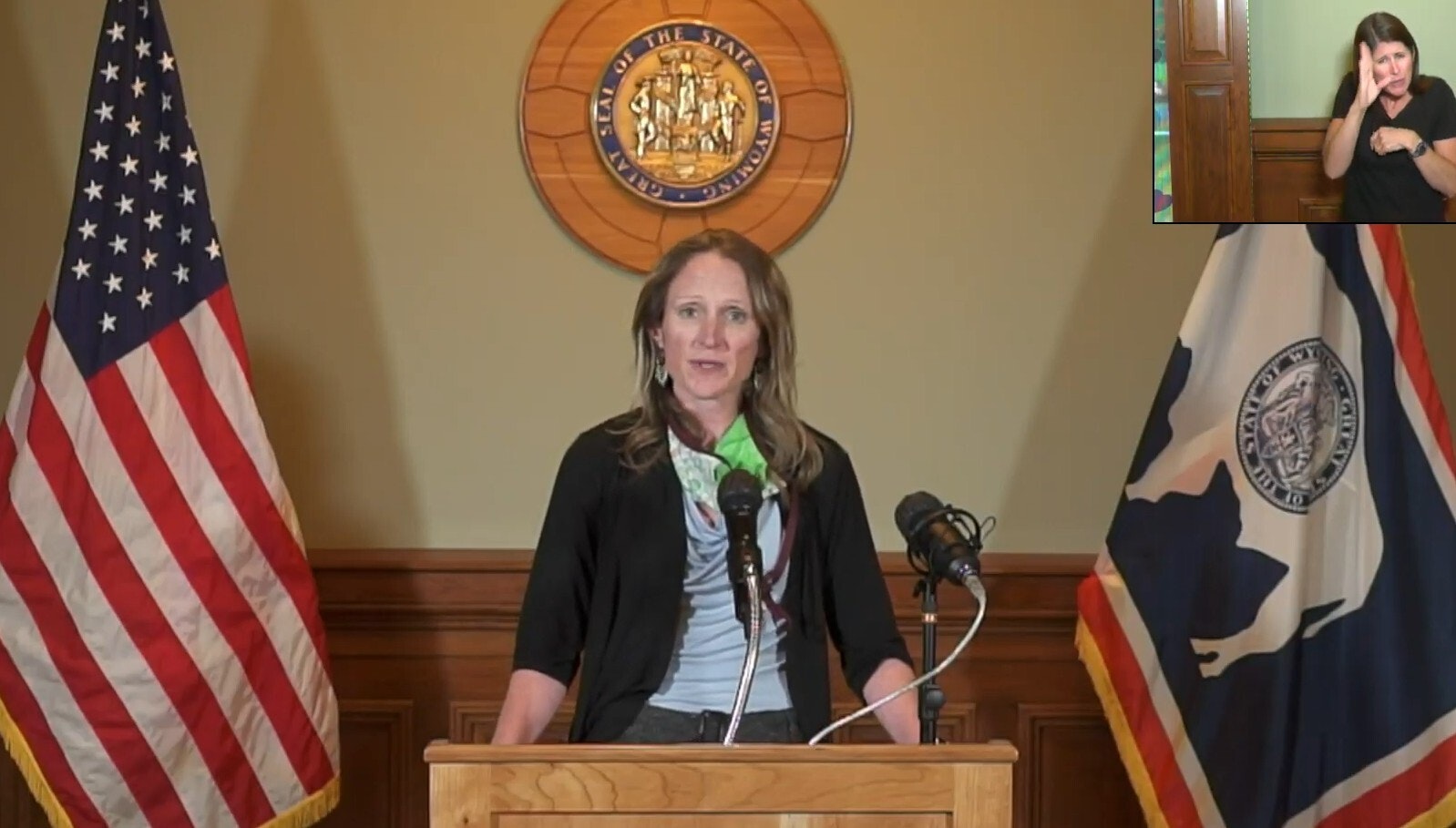Wyoming public health officer Dr. Alexia Harrist is saddened by people who think that current public health orders, especially those in places for K-12 students, are “something insidious,” she said during a news conference on Wednesday afternoon.
Harrist said as schools begin to reopen, it is important that people follow the three recommendations that the state has issued to prevent the spread of the illness: Staying at home when sick, practicing social distancing and using facemasks when social distancing is not possible.
“These three simple tools are the foundation of our public health orders and school plans,” Harrist said. “It does make me sad to know some of these recommendations, some people see them as insidious or more than just using the best tools we have to let children go to class.”
During the talk alongside Gov. Mark Gordon, Harris provided various coronavirus-related updates, such as the fact that the Wyoming Department of Health’s laboratories can now process up to 750 tests or more per day with a “consistent” turnaround time.
Recent wastewater tests in nine communities across the state have also shown signs of the coronavirus. Harrist said the health department would continue looking into this data, hoping it could provide evidence of virus prevalence in certain communities.
But since August has creeped in, Harrist acknowledged that many Wyomingites have been curious about schools resuming for in-person classes and what guidelines their district may install.
“Schools are very important to our communities for many reasons,” she said. “As a pediatrician, I know being in schools…is healthy and helpful for most children. But we need to make sure our children and teachers are safe.”
The entire state can help prevent the spread of the virus and allow children to attend school in person by following the state’s recommendations, Harrist told the viewers.
She expects there will be cases of the coronavirus popping up in schools once classes resume, but following the aforementioned recommendations would keep the numbers lower and more manageable.
If students or school staff do test positive for the virus, health officials will contact the person or their parents and place them in isolation. Officials will also decide who’s been in close contact with the infected person and if they should be isolated.
Schools will be identified, contacted and will work through a plan with their local public health officials.
“We want these decisions to be focused on what’s best for our children, their families, our teachers and our communities,” Harrist said.





